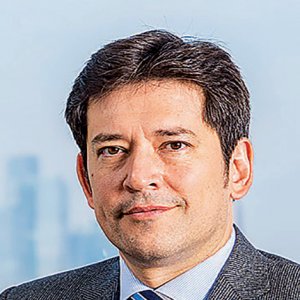Mexico City Pilot of Megacities Project

Acting as the Executive Director of Greenpeace in any country is never an easy task. Every country presents different environmental liabilities, varying levels of commitment within the government and the private sector, and a general population in need of education. In Mexico, this problem is compounded by the sheer size of its capital. With over 22 million inhabitants, Mexico City’s levels of waste management, emissions, and urban planning flaws are just some of the issues that its government has to grapple with. However, this is an area where Greenpeace believes it can help.
Femke Bartels, the Executive Director of Greenpeace Mexico, explains that a major new focus for the NGO concerns megacities. “We are piloting this program in Mexico. Mexico City emits more CO2 emissions than the whole of Ireland, so urgent action is required. We do not have the time to approach every municipality individually, and Mexico City is a good place to start,” she explains. It is Greenpeace’s belief that if Mexico City implements a program that leads to success, other Mexican cities will follow suit. In the Mexico City pilot program, Greenpeace will focus on transportation, decentralized renewable energy generation, urban farming, and green roofs. According to Bartels, many specific actions can be taken to make the city greener, such as regulating water flow. “Mexico City faces heavy rainfall but the water simply floods the streets, leaving 5.6 million people in the capital at a high risk of flooding. Added to the fact that Mexico City is sinking, the problem becomes acute. We want to look at the city as an ecosystem and answer questions such as how it can generate its own clean energy,” she says.
With the anticipated roll-out of the project scheduled for 2015, Greenpeace will be making specific recommendations to the city government, but it knows that further collaboration is required. Discussions have already taken place with CEMDA, ClimateWorks, and Centro Mario Molina. Such a collective approach will certainly make Greenpeace’s voice louder but Bartels knows that the aim of this megacity pilot project must go further than simply convincing the government to take the right steps. “Greenpeace wants to work alongside the Mexico City government in a complementary way. One of the primary ideas we have for Mexico is the promotion of solar panel projects, but people are distrustful about making a big investment without guaranteed returns. This has led us to look at business models in leasing solar panels so that people can pay an affordable price to install panels for renewable energy,” states Bartels. One part of the megacities project will also look at the structure of waste collection facilities in Mexico City. With the majority currently being carried out manually, Bartels acknowledges that building large, centralized infrastructures to handle waste would be pointless. Instead, Greenpeace seeks to play to Mexico City’s strengths by designing decentralized systems that are more resilient, more efficient, and allow more control.
A similar final initiative concerns micro biogas installations, which could prove particularly useful, given the scale of Mexico City’s waste problem. These installations would allow citizens to collectively use organic waste to produce energy. According to Bartels, Greenpeace has been made aware of a lack of collaboration and cohesion between levels of government and political parties within Mexico City and its metropolitan area. In this way, a particular advantage of the biogas initiative is that it is less focused on government action or policy-making, and the responsibility lies with public action.
This megacity project in Mexico City will be one of Greenpeace’s three main enterprises in Mexico over the next five years, alongside toxic rivers, and sustainable agriculture. However, these three areas will be linked, given the way in which water quality and unhealthy nutrition impact life inside the city. “Three to four years from now, Mexico City can be made more livable through concerted efforts to change the infrastructure, particularly in the transport sector. The city’s public transportation is highly inefficient, meaning that some people might opt for a car, even if this alternative is more expensive. Mexico City could quickly be the ride-sharing capital of Latin America through shared economies such as Ecobici and Carrot, which are already active in the city, but relatively overlooked,” says Bartels. Greenpeace sees these initiatives as being conducive to sustainability, especially for those who cannot afford cars or other services.



















